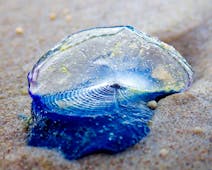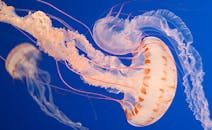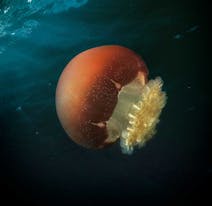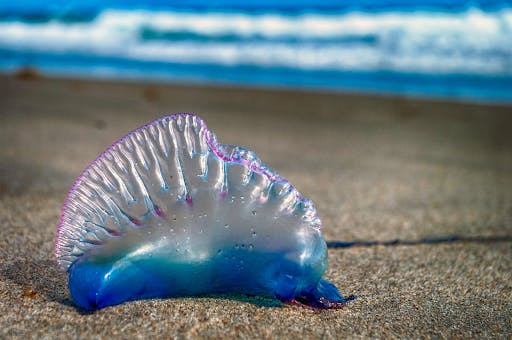Is it safe to scuba dive or swim with jellyfish?
This depends on the type of jellyfish you’re around and what sort of protection you’re wearing. It’s best not to swim or dive with highly venomous jellyfish at all.
How can I prevent jellyfish stings?
Wearing a wetsuit, rashguard, skin suit, gloves, hood, boots, and anything else that can put a barrier between your skin and a jellyfish tentacle is a great way to prevent stings while diving.
How long is a jellyfish's lifespan?
Depending on the species, jellyfish can be known to live for a couple of weeks to over a year.
If I see a jellyfish on the beach, what do I do?
If you see a jellyfish on the beach, it’s not like litter, there’s no need to pick it up. There’s also no need to take it back into the sea. It’s best to just leave it alone and keep walking. A beached jellyfish is either dead or dying and will serve as a meal for local terrestrial wildlife.
What do I need to know about jellyfish?
It’s always beneficial to know everything you can about an animal when you’re exploring its environment. The main things to know though include how best to respect an animal’s space and how to prevent contact or injury with a wild animal.
References:
Everything You Need to Know About Jellyfish In The Florida Keys
Secret Spot: Moon Jellyfish in Jupiter, FL
12 Fascinating Facts About Jellyfish
Corals and Other Invertebrates: Portuguese Man O’ War
Colonial Creatures: By-The-Wind Sailor
Atlantic Sea Nettle


















